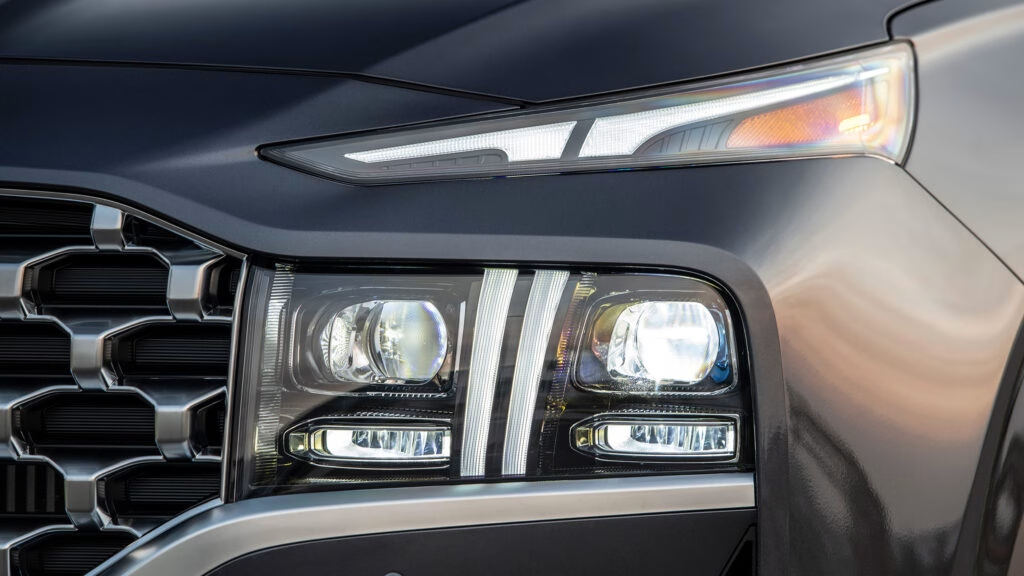Which Trucks Are the Cheapest to Insure Right Now?
If you’ve ever shopped for a new truck, you know the sticker price is just the beginning. Insurance can quietly tip the scales, sometimes adding hundreds to your annual cost. According to recent data from Mercury Insurance, Chevrolet is leading the pack for affordable coverage, with its Colorado LT and Silverado C3500 topping the list of least expensive trucks to insure in the US.
Here’s how the top 10 shakes out:
1. Chevrolet Colorado LT
2. Chevrolet Silverado C3500
3. Ford Maverick / Ford Ranger (tied)
4. Hyundai Santa Cruz SE
5. Toyota Tundra CrewMax
6. Ford F-150
7. Toyota Tacoma
8. Ford F-350 Super Duty
9. Dodge 1500 / RAM Truck 1500
10. GMC Canyon
What’s interesting? The list is a mix of full-size workhorses and smaller, lifestyle-oriented trucks. The Colorado LT, for example, is a midsize pickup that’s become a favorite for urban drivers and weekend adventurers alike. Its insurance affordability likely comes down to a combination of moderate repair costs, strong safety ratings, and a lower theft rate compared to flashier models.
Why Do Some SUVs Cost Less to Insure Than Others?
SUVs are everywhere, but not all are created equal when it comes to insurance costs. Mercury’s data shows the Hyundai Santa Fe is the most affordable SUV to insure, with Honda making a strong showing—four of its models land in the top 10.
Here’s the full rundown:
1. Hyundai Santa Fe
2. Honda Pilot
3. Chevrolet Blazer
4. Kia Sportage
5. Honda Passport
6. Ford Escape
7. Kia Soul
8. Honda HR-V
9. Honda CR-V
10. Kia Sorento
Notice something missing? Despite Toyota’s reputation for reliability and popularity, not a single Toyota SUV made the list. That’s a curveball, considering the brand’s strong presence in the segment.
So, what’s driving these numbers? Insurance premiums are shaped by a cocktail of factors: repair costs, safety features, accident statistics, and even how likely a model is to be stolen. Vehicles like the Santa Fe and Pilot tend to have above-average safety ratings and reasonable parts prices, which insurers love. Honda’s dominance here is no accident—the brand’s focus on practical, family-friendly models with strong safety tech pays off in the form of lower premiums.
Are Electric Vehicles (EVs) More Expensive to Insure?
You might have noticed a glaring omission from both lists: electric vehicles. EVs are often pricier to insure, and that’s not just a hunch. According to a 2024 report from the Insurance Institute for Highway Safety (IIHS), average EV insurance premiums can be 15-25% higher than comparable gas models. Why? Parts are more expensive, repairs require specialized technicians, and batteries can cost thousands to replace after an accident. For now, if low insurance is your goal, sticking with a traditional gas-powered truck or SUV is the safer bet.
How Much Can You Actually Save by Choosing a Cheaper-to-Insure Model?
This is the million-dollar question, and unfortunately, Mercury’s study doesn’t publish exact premium amounts. But industry data fills in some blanks. According to the National Association of Insurance Commissioners, the average annual premium for a midsize SUV in the US is about $1,300, while a full-size pickup averages $1,450. If you opt for a model at the top of Mercury’s list, you could save anywhere from $150 to $400 a year compared to a more expensive-to-insure rival. Over a five-year ownership period, that’s real money—enough for a few road trips, at least.
What Other Factors Should You Consider Besides the Insurance Premium?
It’s tempting to zero in on insurance costs alone, but don’t forget the bigger picture. Some trucks and SUVs may be cheap to insure but cost more to fuel, maintain, or repair. Others might have lower resale value, which can eat into your savings down the line. And then there’s the matter of fit—does the vehicle actually suit your lifestyle? For example, the Ford Maverick’s compact size makes it easy to park and cheap to run, but it might not be up for heavy-duty towing.
Also, keep in mind that your personal profile—age, driving record, location—will always influence your rate. Two drivers with identical trucks could pay very different premiums just based on zip code or accident history.
Why Are Some Popular Models Missing from the List?
You’d expect to see perennial bestsellers like the Toyota RAV4 or Ford Explorer in the mix, but they’re nowhere to be found. This could be due to higher repair costs, more expensive parts, or simply a higher rate of claims. Sometimes, popularity works against a model—if a vehicle is frequently involved in accidents or targeted by thieves, insurers will charge more to cover it.
What’s the Smartest Way to Shop for a Truck or SUV with Insurance in Mind?
Start by narrowing your choices to a few models that fit your needs. Then, before you even set foot in a dealership, get insurance quotes for each vehicle. Many insurers offer online tools that let you compare premiums side by side. Don’t be afraid to ask your agent for advice—they see claim patterns and can often steer you toward models with hidden savings.
And don’t overlook discounts. Features like automatic emergency braking, lane-keeping assist, and anti-theft systems can shave dollars off your bill. Bundling your auto policy with home or renters insurance? That’s another easy win.
The big takeaway? Finding a truck or SUV that’s cheap to insure isn’t about perfection—it’s about smarter adjustments. Start with one change this week, and you’ll likely spot the difference by month’s end.

